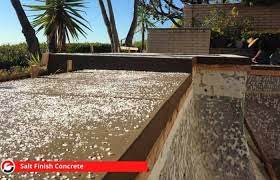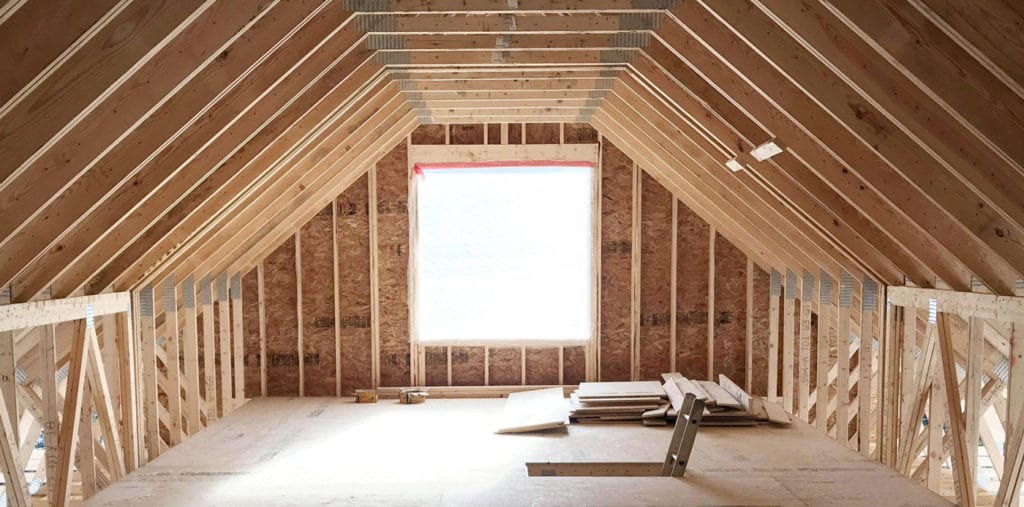Salt finish concrete is a type of decorative concrete finish that has gained popularity for its unique texture and appearance. In this technique, salt particles are sprinkled onto the freshly poured concrete surface before it sets, creating a distinctive and aesthetically pleasing finish. Like any construction method, salt finish concrete has its advantages and disadvantages, which should be carefully considered before implementation. We will delve into the pros and cons of using salt finish concrete in various applications.
Pros:
Aesthetic Appeal: One of the primary reasons for choosing a salt finish is its visual appeal. The textured surface provided by the salt particles gives the concrete a natural, rustic look that can add character and charm to various architectural and landscaping designs. The salt finish is especially popular for projects that aim to mimic the appearance of natural stone or create a beach-like atmosphere.
Slip Resistance: Safety is always a critical consideration in construction, particularly in areas prone to moisture or foot traffic. Salt finish concrete offers improved slip resistance due to its textured surface. When compared to standard smooth concrete, the added texture can enhance traction and reduce the risk of slipping, making it a suitable option for outdoor walkways, pool decks, and other areas exposed to water.
Cost-Effective: Compared to more intricate decorative concrete finishes, such as stamped or stained concrete, salt finish is relatively cost-effective. The application process is straightforward and doesn’t require specialized equipment, reducing labor and material costs. This affordability makes salt finish concrete an attractive option for budget-conscious projects without compromising on aesthetics.
Easy Installation: The installation process of salt finish concrete is relatively simple, making it an accessible option for both professional contractors and do-it-yourself enthusiasts. Once the concrete is poured and leveled, the salt particles are spread evenly across the surface. As the concrete cures, the salt absorbs moisture, creating small indentations and a unique texture. After the concrete has fully cured, the excess salt is washed away, revealing the salt-finished surface.
Durable and Long-Lasting: When properly installed and maintained, salt finish concrete can be highly durable and long-lasting. Because of its durability and capacity to endure wear and tear, salt finish concrete is an excellent choice for high-traffic areas such as driveways, sidewalks, and commercial spaces. However, it’s crucial to ensure proper curing and sealing to protect the surface from potential damage caused by environmental factors and frequent use.
Cons:
Unpredictable Results: Despite its appeal, achieving consistent and uniform results with salt finish concrete can be challenging. Several factors, including weather conditions, concrete mix design, and application techniques, can influence the final appearance. Consequently, reproducing the precise texture and color in future projects might pose a challenge.
Limited Patterns and Colors: Unlike other decorative concrete finishes, such as stamped or stained concrete, salts finish offers limited design options. The texture created by the salt particles is relatively uniform, and the finish is generally monochromatic. This limitation may not suit projects requiring intricate patterns or a wide range of colors.
Potential Scaling Issues: In colder climates or regions prone to freeze-thaw cycles, salt finish concrete may be susceptible to scaling or surface flaking over time. The salt particles can absorb moisture during curing, and if not adequately sealed, the freeze-thaw cycles can cause the absorbed water to expand, leading to surface damage. To mitigate this risk, it’s essential to use an appropriate concrete mix and apply a high-quality sealer.
Maintenance Requirements: While salts finish concrete can be durable, it may require more frequent maintenance compared to smoother concrete finishes. The textured surface can trap dirt, debris, and stains, making regular cleaning necessary to preserve its appearance. Additionally, periodic resealing is recommended to protect the surface and enhance its longevity.
Surface Smoothness: Although the salt finish provides a textured appearance. It may not be suitable for applications where a smooth surface is required. For example, salts finish concrete may not be ideal for indoor floors. Where a flat and even surface is essential for walking, moving furniture, or installing flooring materials.
In conclusion
salts finish concrete offers a visually appealing and cost-effective option for decorative concrete applications. Its rustic texture and slip resistance make it particularly well-suited for outdoor areas and landscaping projects. However, it’s crucial to consider the potential challenges, such as unpredictable results and maintenance requirements. Before choosing salts finish concrete for a particular project. Proper installation, attention to weather conditions, and the use of quality materials are essential to ensure the best possible outcome and long-term durability of salt finish concrete surfaces.




